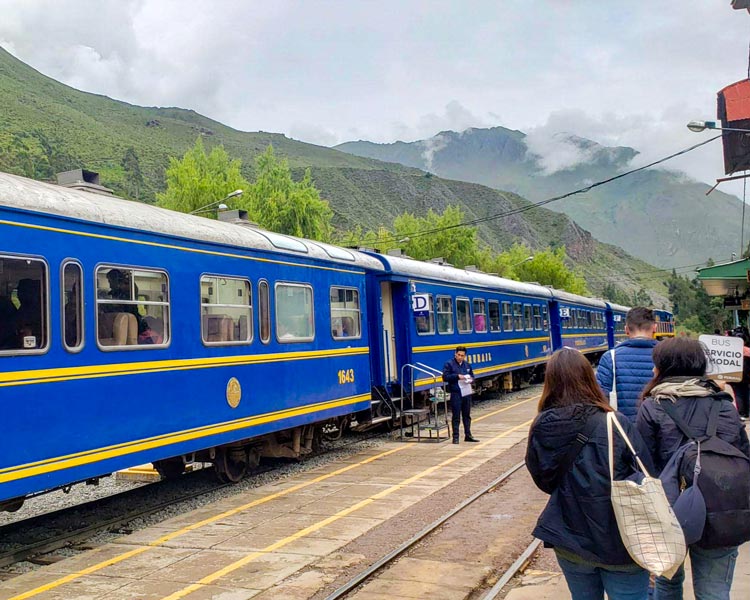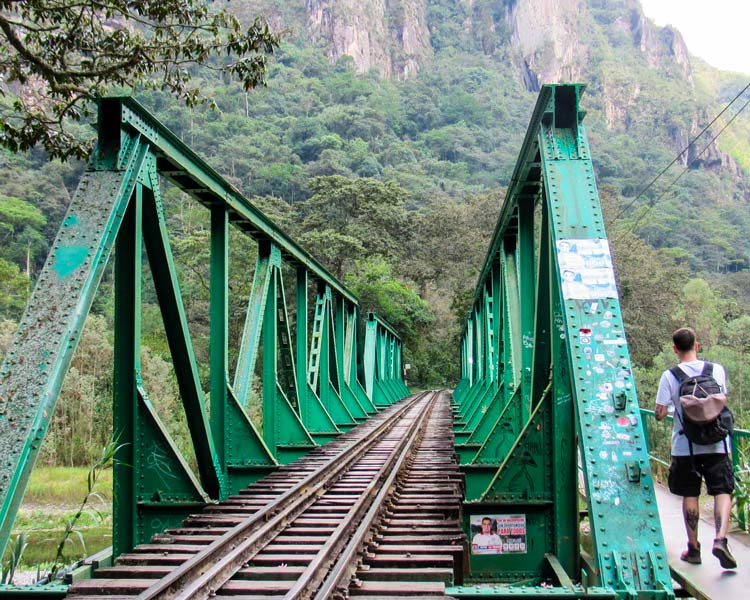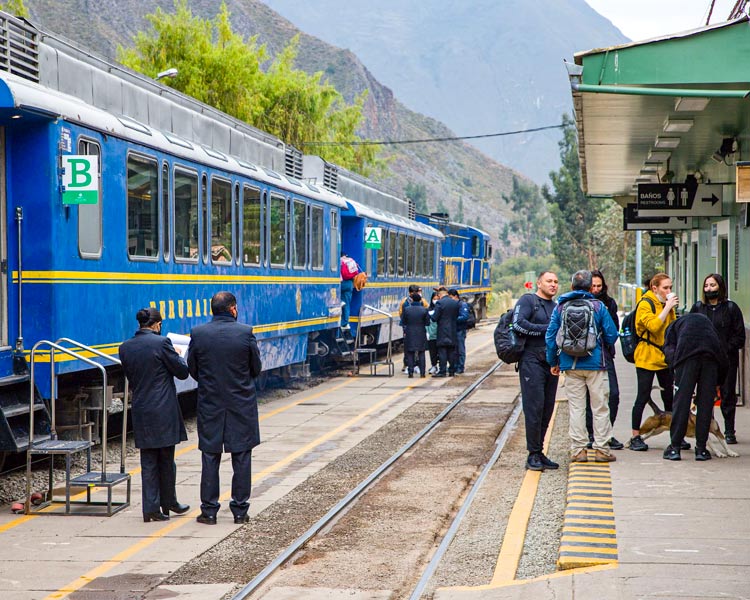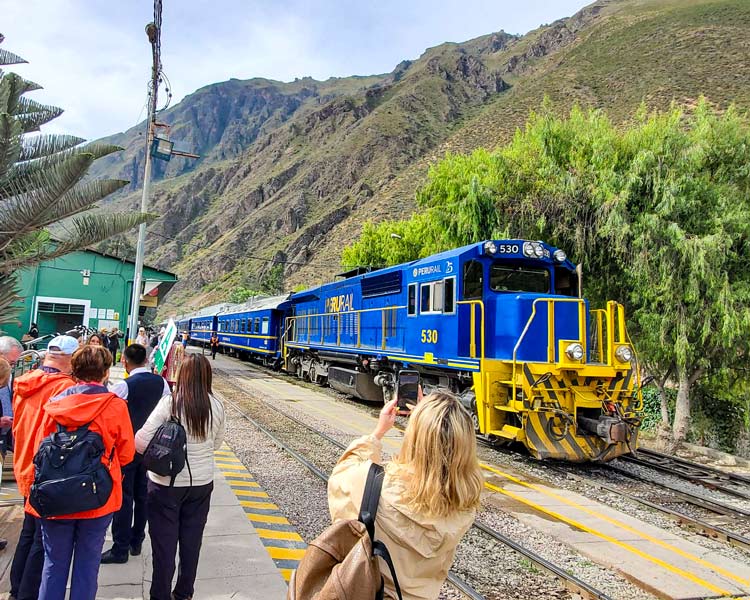What if your alarm doesn’t go off that very day? Or if your transportation is delayed longer than expected? Missing the train to Machu Picchu can seem like a nightmare for any traveler, especially if your entire itinerary revolves around that visit. But what can you really do in that situation?
Content
What should I do if I miss my train to Machu Picchu?

Can I change my ticket if I miss the train?
No, if you miss your train, it’s no longer possible to change or reschedule your ticket, as companies like PeruRail and IncaRail consider the ticket used once the train has departed, regardless of the reason for the delay.
The only thing you can do is buy a new ticket, so it’s recommended to arrive at the station well in advance to avoid any setbacks that might prevent you from boarding on time.
Is there a refund if I don’t board the train?
Normally, if you don’t board the train and haven’t made a change in advance, there’s no right to a refund. Both PeruRail and Inca Rail specify that tickets are non-refundable after the departure time, except in the case of documented force majeure.
If you know in advance that you won’t be able to take the train, it’s best to cancel within the established timeframe (3 days before your travel date). This way, you may be eligible for a partial refund, subject to deductions for administrative penalties.
Is it possible to board another train on the same day?
Yes, you can board another train on the same day, but only if there is availability and you purchase a new ticket. They don’t allow boarding with the same ticket or making a change, even if you pay a penalty.
It’s best to go to the ticket office as soon as possible and ask about the next available times, but during peak season, it may be harder to find free spots, so you’ll need to act quickly.
Alternatives to get to Machu Picchu if you miss the train

What other options are there to get to Machu Picchu?
In addition to the train, there are alternative routes that combine bus transportation and hiking. The best-known is the Hydroelectric route, which involves taking a bus to Santa Teresa or Hydroelectric and then hiking to Aguas Calientes, the base town for Machu Picchu. It’s a cheaper option, although longer and more tiring.
There are also trekking routes such as the Inca Trail, Salkantay Trek, Lares Trek, and other multi-day options. These alternatives are usually booked through travel agencies and require more physical preparation, but are ideal if you’re looking for a more adventurous experience.
Is it feasible to take a bus or take an alternative walk?
Yes, it’s feasible, but it requires more time and planning. The route via Hydroelectric is the most popular among those looking for a more economical option or unable to get train tickets. From Cusco, take a bus to Santa Teresa and then continue by car to Hydroelectric, from where you begin a hike of approximately 2 to 3 hours to Aguas Calientes.
This option is not recommended if you’re short on time or if your visit to Machu Picchu is scheduled for the same day, as any delay could result in you losing your entry ticket. Furthermore, during the rainy season, landslides can occur on the road, which poses a certain risk.
How much time and money do these alternatives involve?
The route via Hydroelectric can take between 7 and 9 hours from Cusco to Aguas Calientes, considering the bus ride and the hike. As for costs, the bus fare can cost between 60 and 120 soles each way, either one way or the return trip, depending on the company. It’s a cheaper option than the train, but more physically demanding.
Organized treks, such as the Inca Trail or the Salkantay Trek, are more expensive because they include food, guides, lodging, and transportation. They can last from two to five days, with prices ranging from approximately $300 to $1,200, depending on the route and the services included.
Tips to avoid missing your train

How far in advance should I arrive at the station?
It’s recommended to arrive at least 30 minutes before the train’s departure time. This will give you enough time to check in, go through security, and find your corresponding car. During peak season, or if you’re traveling from Cusco to Ollantaytambo by road before the train, consider leaving well in advance.
If you arrive too early or too late, you could miss your train with no refund. Therefore, it’s best to plan for any setbacks and arrive at the station with plenty of time, especially if you’re traveling from another city or district.
What documents do I need to bring?
To board the train, you must present your ID (DNI if you’re Peruvian or passport if you’re a foreigner). The name on the ticket must exactly match the document presented. You must also show a printed or digital ticket.
Also, if you have an entrance ticket to Machu Picchu or a bus ticket to the citadel, it’s a good idea to bring them with you to avoid any setbacks in your itinerary. Check that everything is in order before your trip to avoid any problems at checkpoints.
What should I do if there are unforeseen delays?
If you experience an unforeseen delay, such as traffic or transportation issues to the station, try to contact the train company immediately to see if there’s any possibility of rescheduling. While this isn’t always possible, they sometimes allow changes with a penalty or may be able to provide an alternative solution.
If the delay is caused by the railway company itself (such as technical failures or weather problems), they will inform you of the next steps. In these cases, they may offer you another train, a rescheduling, or a refund, depending on the reason for the delay and service availability.
Note:
If you booked your train service with us, you can also contact us via WhatsApp, phone, or email, so we can provide you with the support you need.
Frequently Asked Questions
-
Do children or infants pay for train tickets?
Children between the ages of 3 and 17 can pay. If the child is much younger, they can ride the train for free as long as they share a seat with their parents.
-
What do train tickets include?
For starters, train tickets offer you the opportunity to have a seat, avoiding standing or uncomfortable travel. Additionally, depending on the type of train, you may enjoy small snacks, panoramic view cars, or even sleeping cars.
-
How much luggage can I take on the train?
Travelers should know that it’s advisable to travel very light. You’re only allowed to bring luggage weighing no more than 5 kg. If you carry more, you won’t be allowed to take it on board and will have to leave it at the train station as an alternative.
-
What services does San Pedro station offer?
The San Pedro station is rarely active and has only one arrival point, the town of Aguas Calientes. If you find this service active, you can opt for it for a longer route than the one offered by the Ollantaytambo station.
-
What is the most used train station?
The train station most used by almost all travelers is Ollantaytambo, which has frequent departures to the town of Aguas Calientes (Machu Picchu town) on both round-trip routes.
-
How long does the train ride from Ollantaytambo Station to Machu Picchu take?
This is a very short trip; the journey takes about 1 hour and 50 minutes. If you’re someone who wants to get there faster, the train won’t be able to accommodate you, as it always maintains a standard speed throughout the journey.
-
Does the train drop me off in Aguas Calientes or at the entrance to Machu Picchu?
Take note! The train tracks don’t reach the entrance to Machu Picchu. The closest point where the train ends is in the town of Aguas Calientes, from where you can take a bus that takes approximately 30 minutes or walk for two hours to reach the citadel.
-
What is the Hydroelectric Station?
The hydroelectric station is known for being one of the points from which trains also depart to the town of Aguas Calientes, with a very short journey of approximately two hours. This route is preferred by travelers who often opt for tour packages such as Machu Picchu by Car.
-
How far in advance should I be at the train station?
Traveler, it’s important to be ready and prepared at least half an hour before your train’s departure time. Why? Because these trains usually leave exactly on time, and missing your train due to being late can be a real problem.
-
How long does it take to get from Cusco to the Ollantaytambo train station?
You should know that both points are separated by a distance of approximately 78 kilometers, so most travelers take around 2 hours to make this trip.
